ASRock RX 9070 Steel Legend

Central Specifications
- Clock: GPU / Memory
- Boost Clock: Up to 2700 MHz / 20 Gbps
- Game Clock : 2210 MHz / 20 Gbps
- Key Specifications
- AMD Radeon™ RX 9070 GPU
- 16GB GDDR6 on 256-Bit Memory Bus
- AMD RDNA™ 4 Architecture
- 56 Compute Units (3rd Gen RT + 2nd Gen AI Accelerators)
- Microsoft® DirectX® 12 Ultimate
- PCI® Express 5.0 Support
- 2x 8-pin Power Connectors
- 3x DisplayPort™ 2.1a, 1x HDMI™ 2.1b
According to AMD, the new RDNA 4 architecture was developed from the ground up with gaming in mind. Of course, that doesn't mean that a little AI hasn't been sprinkled into the new chips. It's more or less impossible to make a hardware product these days without including AI.
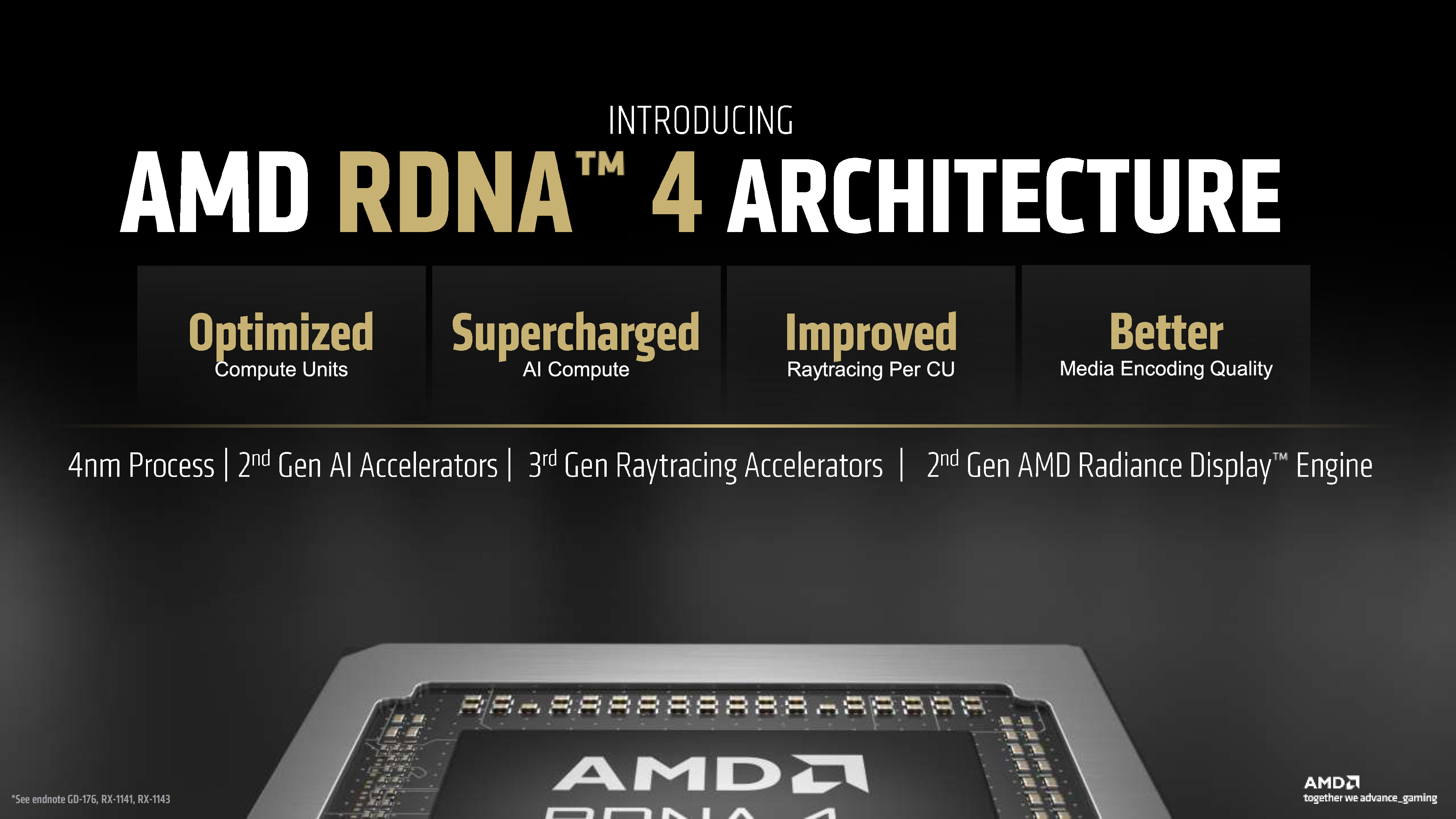
AMD's RDNA 4 architecture has been long-awaited since the launch of the previous RDNA 3 and its upgraded RDNA 3.5 variant. While the RDNA 4 architecture won't include any ultra-enthusiast cards that will compete with the top cards from Nvidia, it does bring brand new changes that should boost gaming performance, as it is primarily designed for gaming fans.
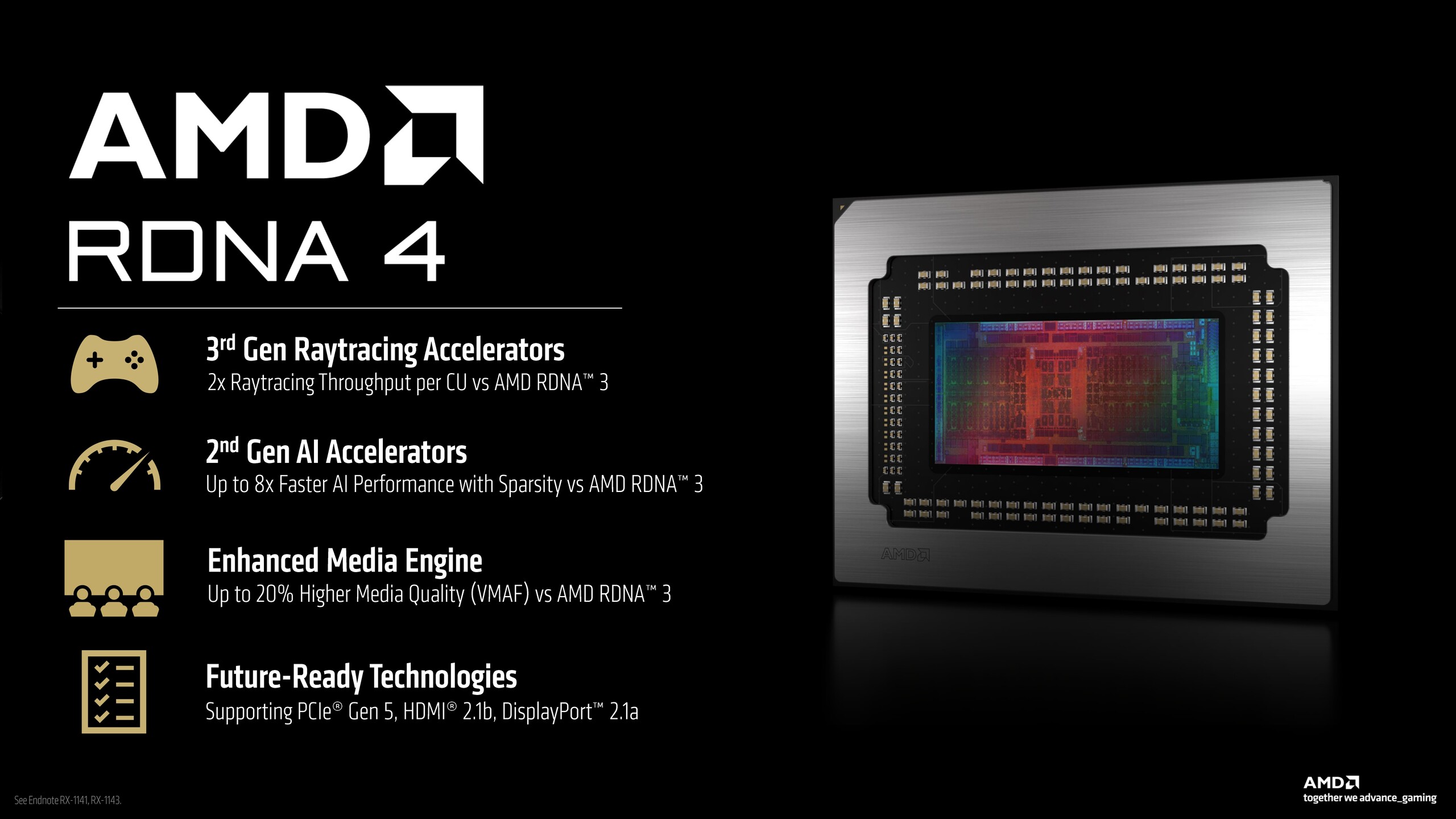
Therefore, AMD has introduced the following new changes in RDNA 4:
- Heavily optimized for high-end gaming workloads
- Improved rasterization and computational efficiency
- A significant boost in ray tracing performance
- Comprehensive high-performance ML support
- Improved bandwidth efficiency for all workloads
- Multimedia enhancements for gamers and content creators
But let's take a closer look at the card itself, this time in a Steel Legend version from ASRock.
A tour around the ASRock RX 9070 Steel Legend
The Partner card here from ASRock comes in a white design with some silver elements which, as the name suggests, is of course made to match ASRock's Steel Legend series of motherboards. The design of the card is more or less exactly the same as we saw on ASRock's B580 Steel Legend graphics card which we reviewed not too long ago. The RX 9070 version is just a bit larger.
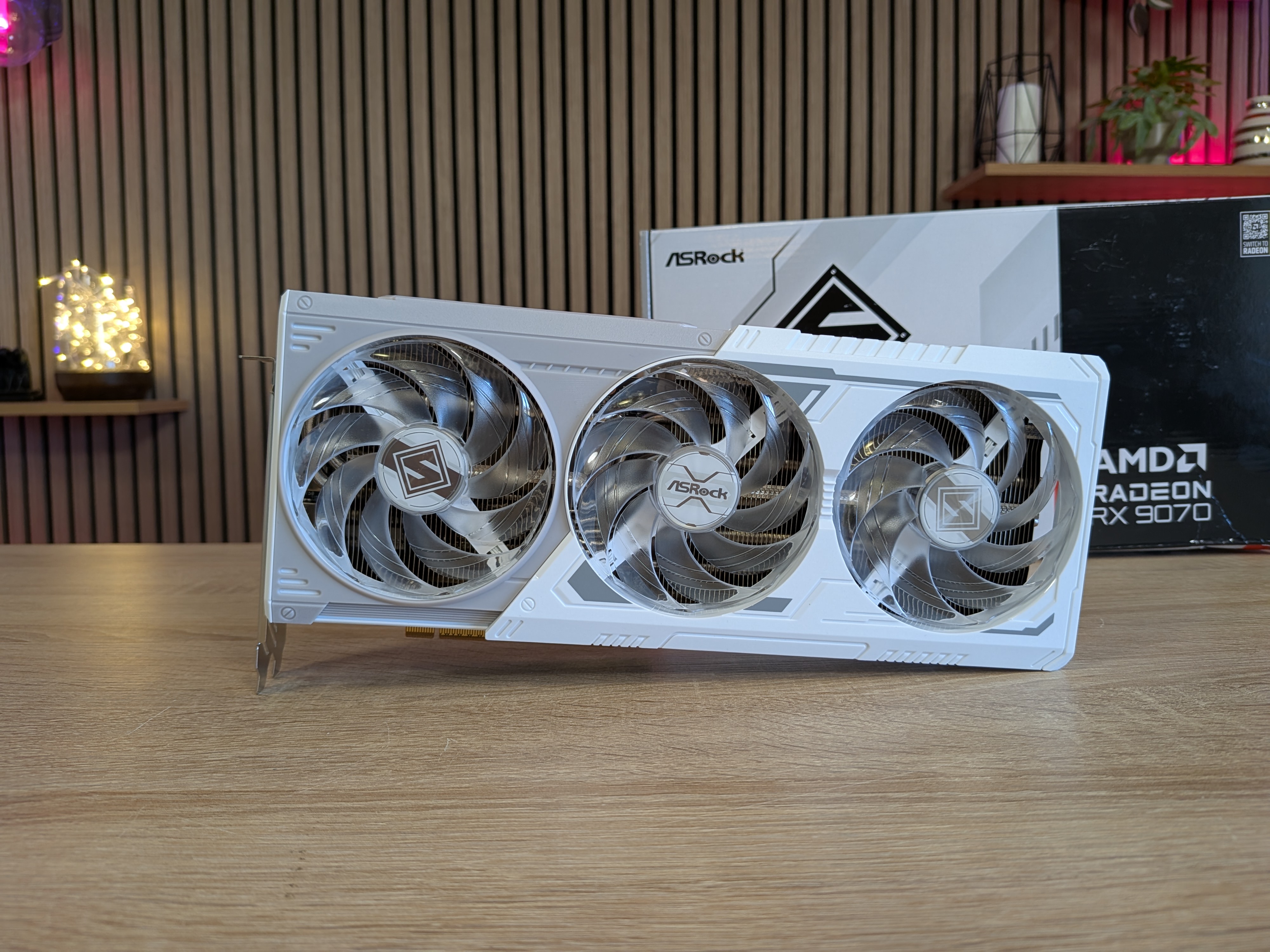
READ ALSO: ASRock B580 Steel Legend
The materials are a combination of plastic and metal. The shield around the three fans is plastic, while the card has a metal backplate. The three fans are made of transparent plastic and have RGB lighting located in the central hub, which spreads nicely over the fins.
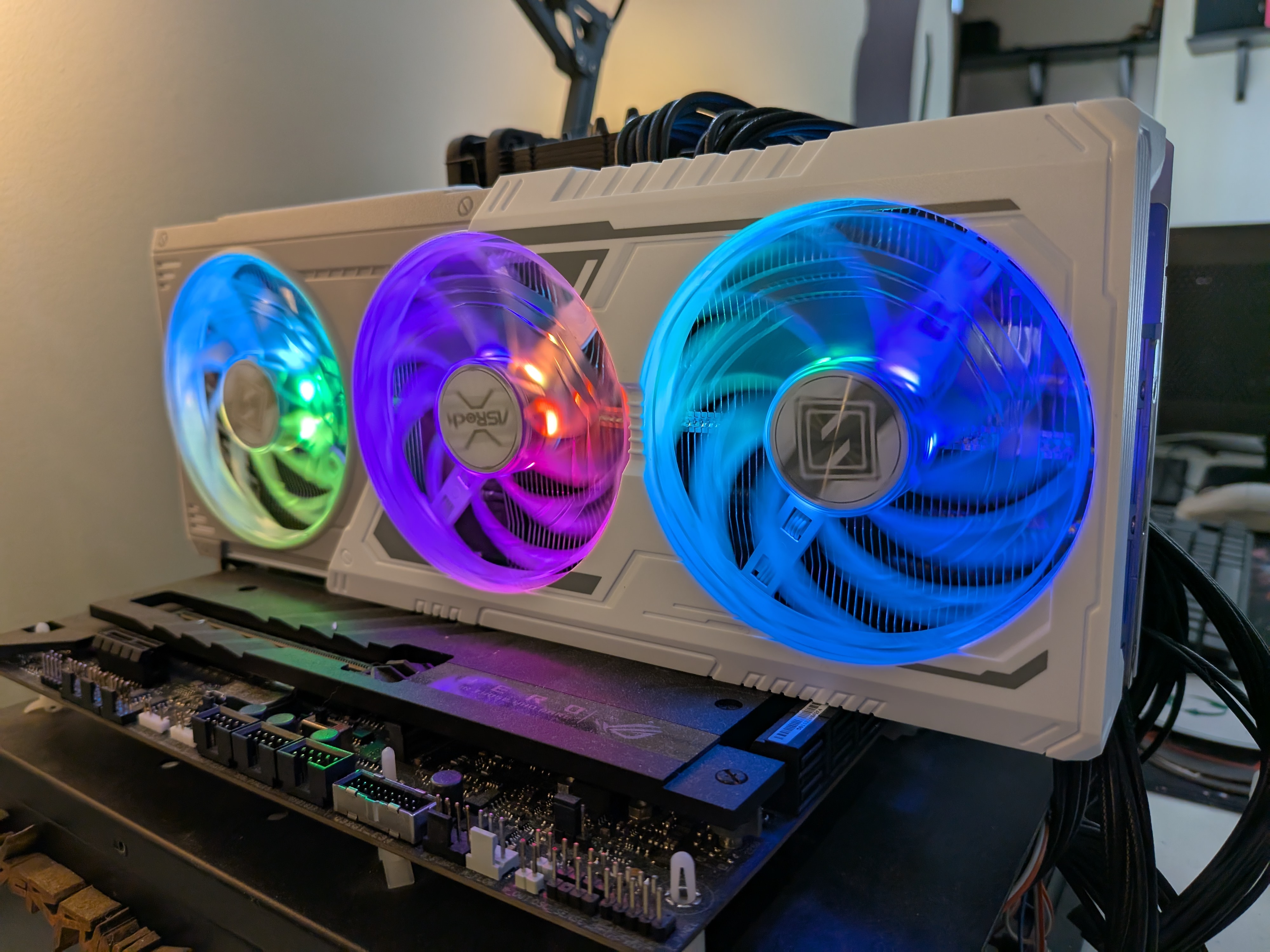
There is another RGB zone in the Steel Legend logo on the side of the card. For even more RGB fun, the card also has a three-pin RGB headset on the back, so you can connect another ARGB device here that will sync with the card.
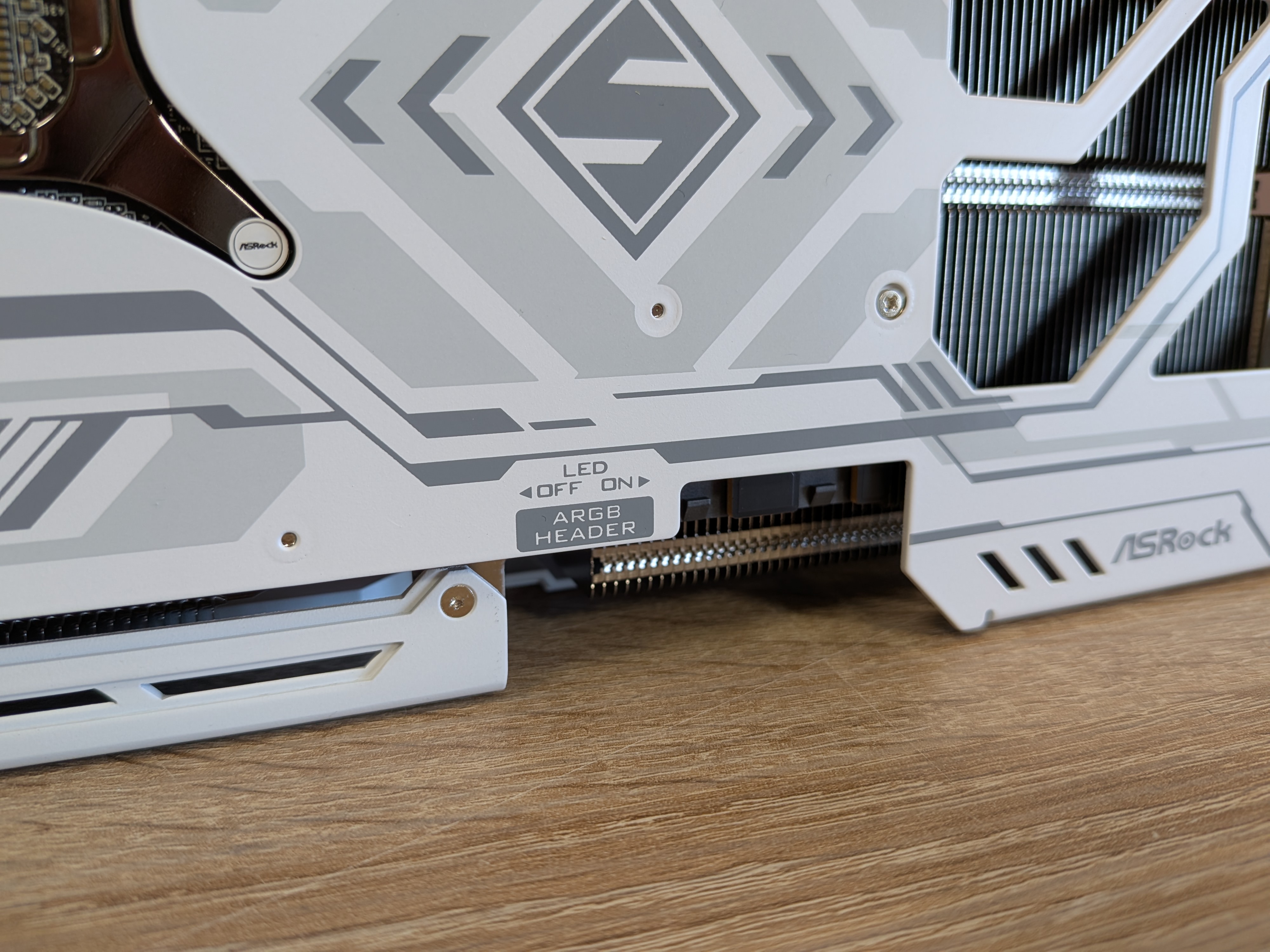
Finally, there's also an RGB on/off button if you prefer to leave the light off. Otherwise, it can also be customized via ASRock's Polychrome Sync software.
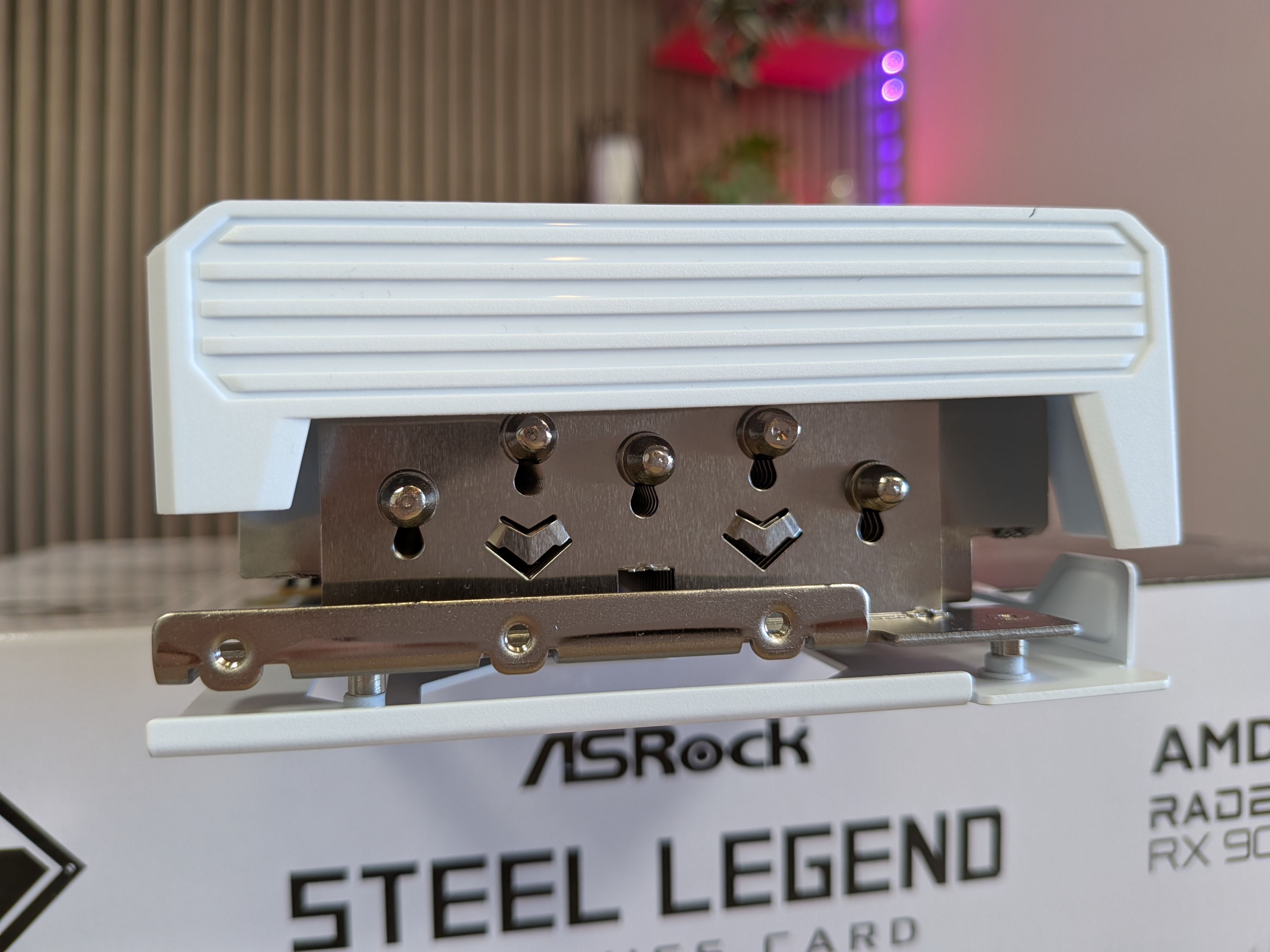
In terms of cooling, the card has, as mentioned, three fans sitting above a reasonable stack of cooling fins with five heatpipes. The cooler consists of a nickel-plated copper cooler, where both the heatpipes and baseplate have direct contact with the GPU chip and the VRM parts on the card.
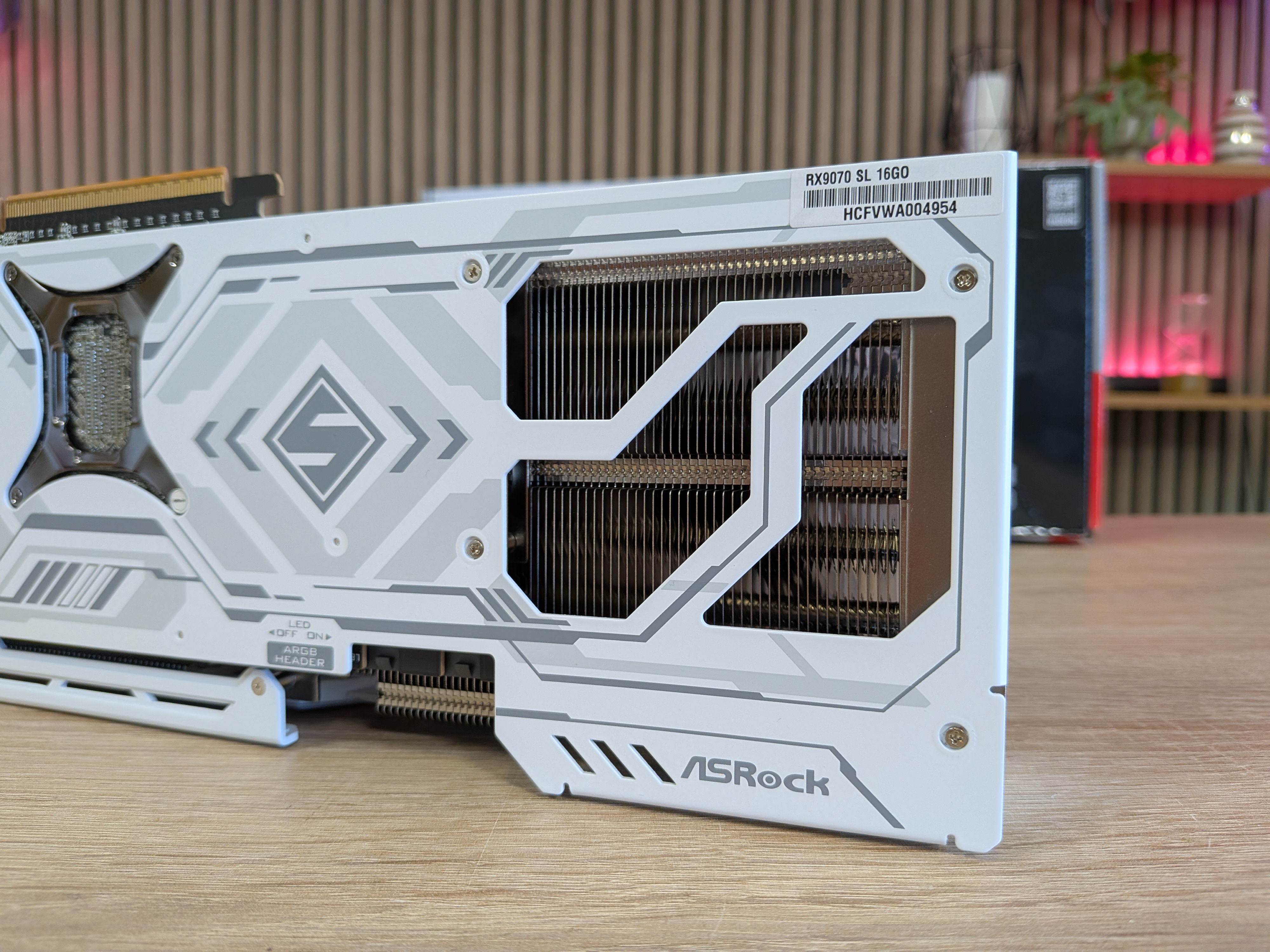
The last part of the cooler is open via the card's backplate, allowing free airflow.
The cooler has the option of 0dB mode, where the fans stop completely under low load to keep noise to a minimum.
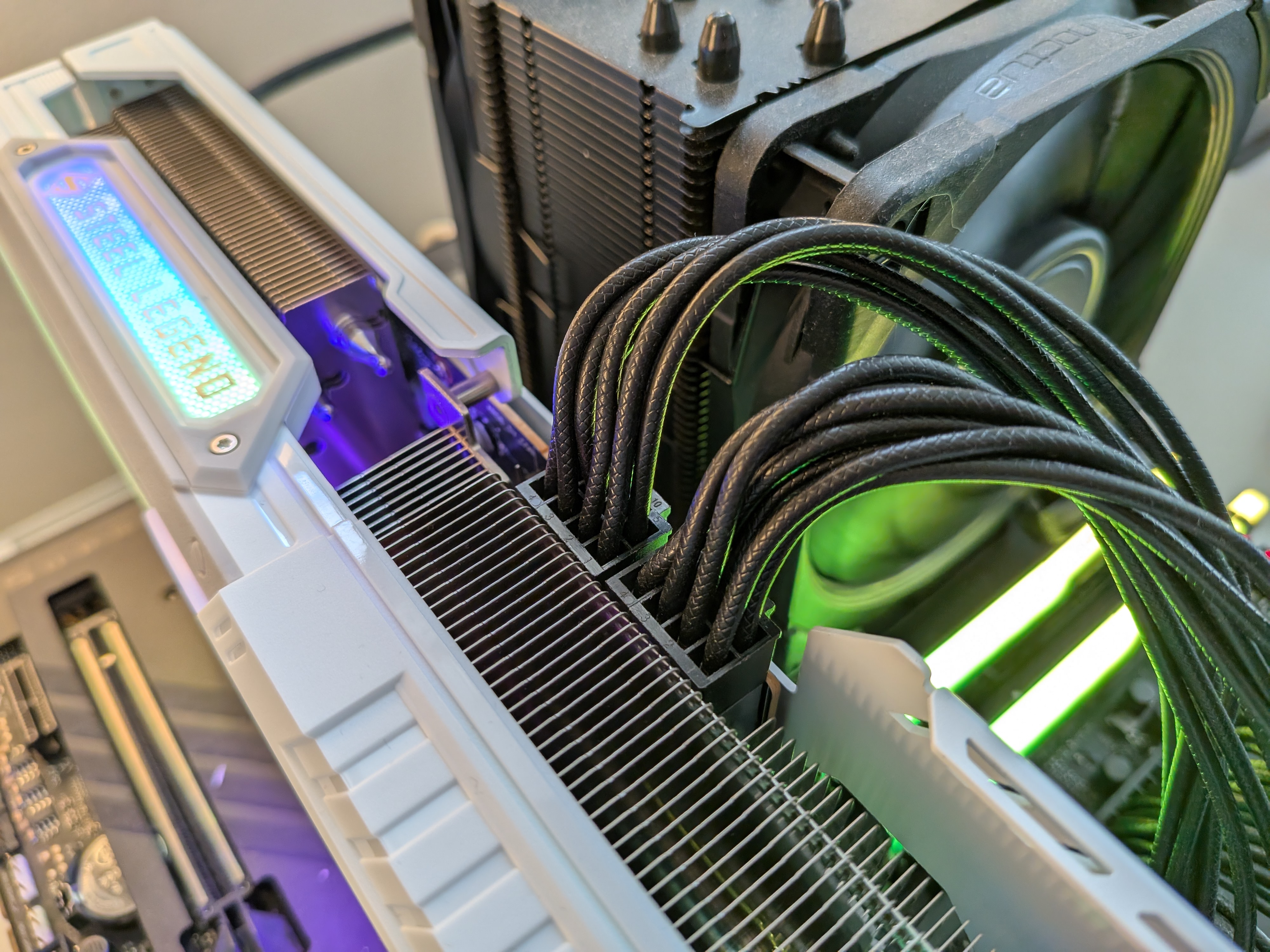
Power for the card is provided by two eight-pin PCIe connectors, which are located approximately in the middle of the card. ASRock recommends a 700W power supply for use with the card.
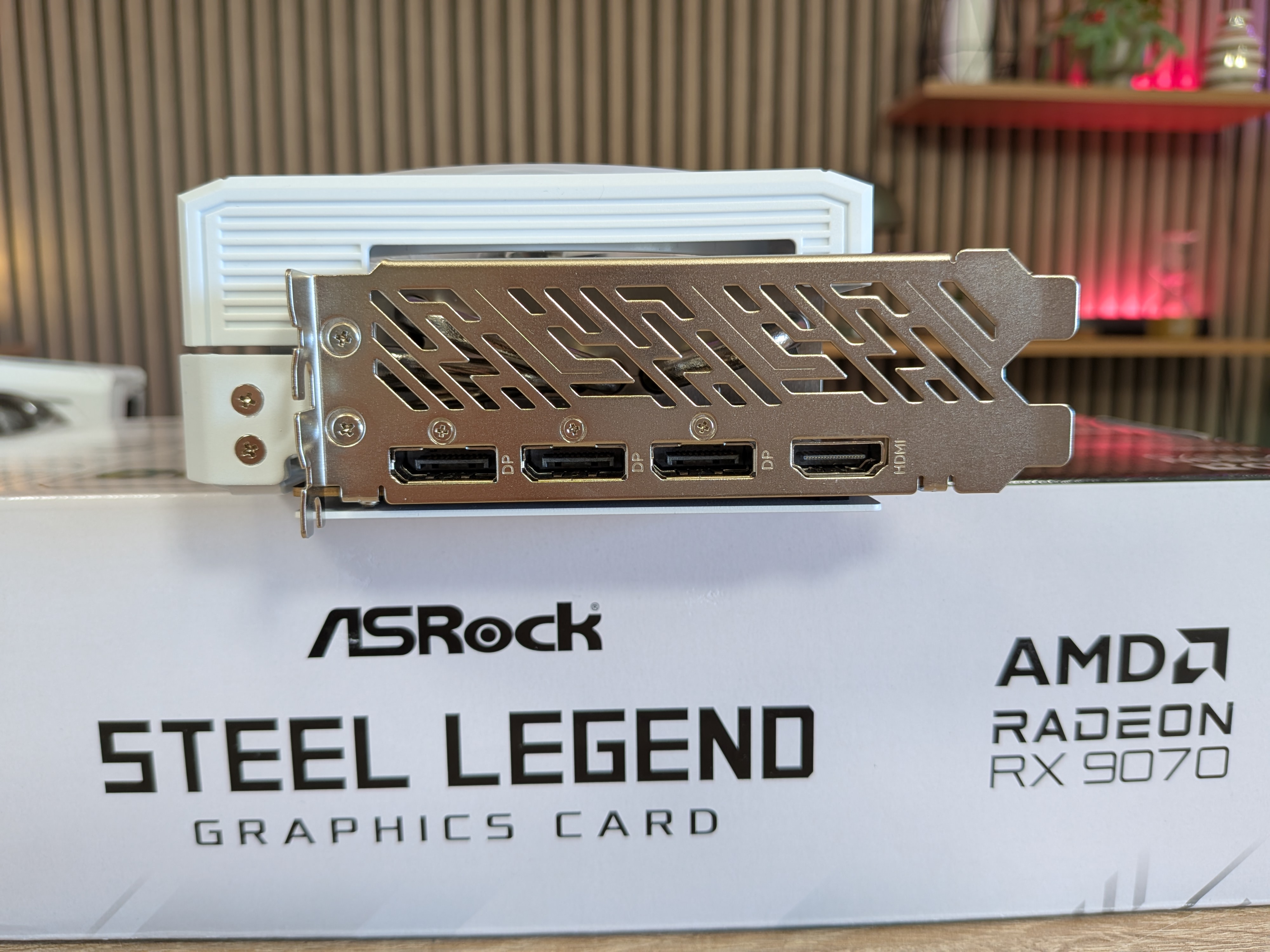
We finish by looking at the connections, where we get three DisplayPort 2.1a and a single HDMI 2.1a.
Test
We'll jump straight into the testing itself and see how the card performs in our selection of benchmarks.
All tests were conducted on our AMD based test bench with the following hardware:
- Motherboard: ASUS ROG Crosshair X670E Hero
- CPU: AMD Ryzen 9 7900
- RAM: 32 GB Kingston Fury DDR5 @6000 MHz
- PSU: Seasonic Vertex GX-1000
All cards included in the comparison have of course also been tested on the same setup.
The first step is to get an overview of the baseline results, and I do this by letting the system run for 30 minutes with a Heaven stress test.
Here the card peaked with a boost clock of 3025 MHz, a good bit above the advertised speed from ASRock, and even better compared to the reference figures, which have a boost clock of 2520 MHz.

The temperature peaked at 59 degrees, so the card is definitely on the sensible end in terms of temperature. However, it should be remembered that we are testing on an open test system, so the temperature can vary quite a bit once everything is in a case.
Synthetic Benchmarks
The next step in the test is the synthetic benchmarks, where we start with 3D Mark Fire Strike Extreme.
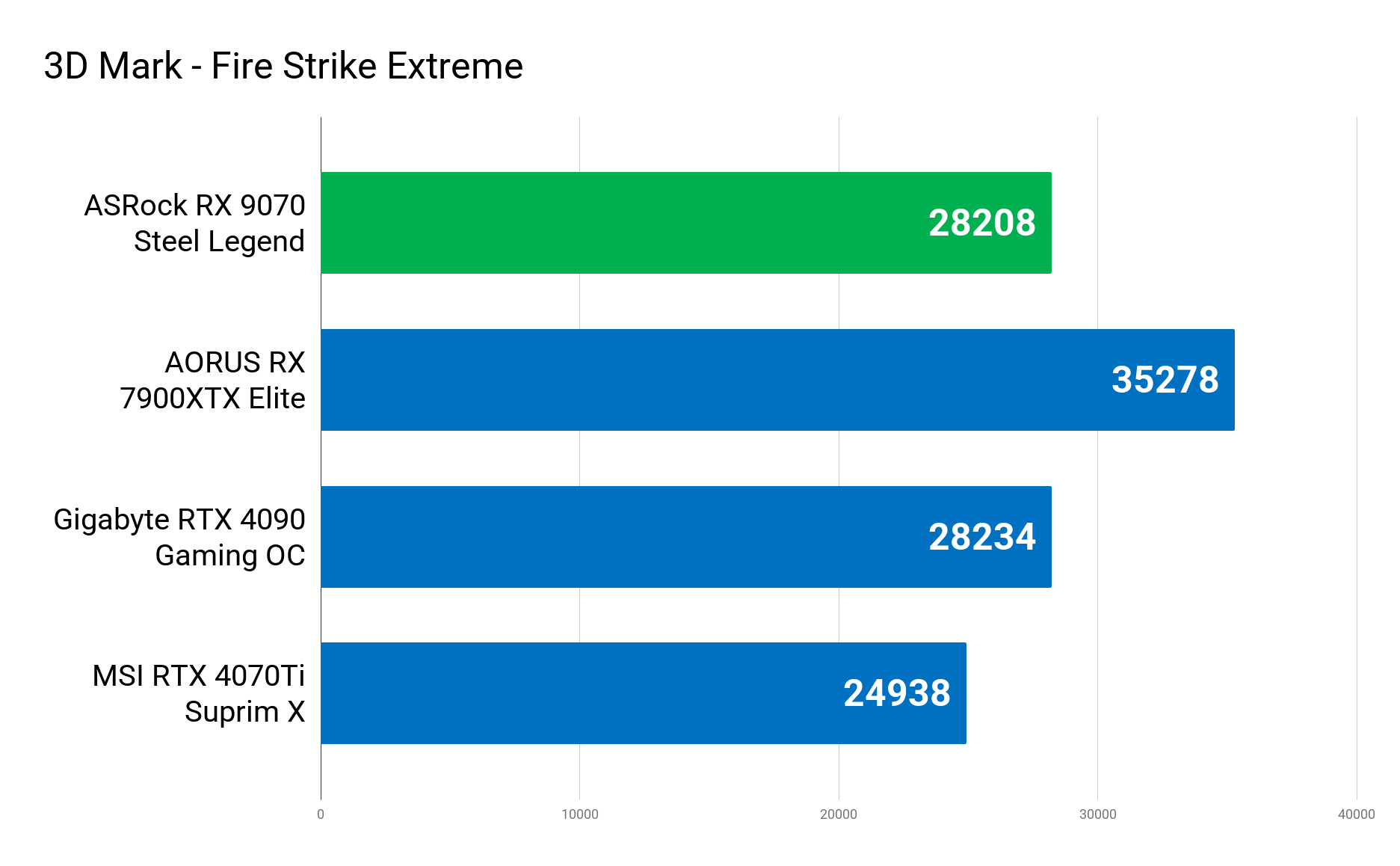
Here we can see that the RX 9070 card comes in really strong. The top card from AMD RX 7900 XTX still beats it solidly, but the new chip from AMD beats both the RTX 4090 and RTX 4070Ti cards.
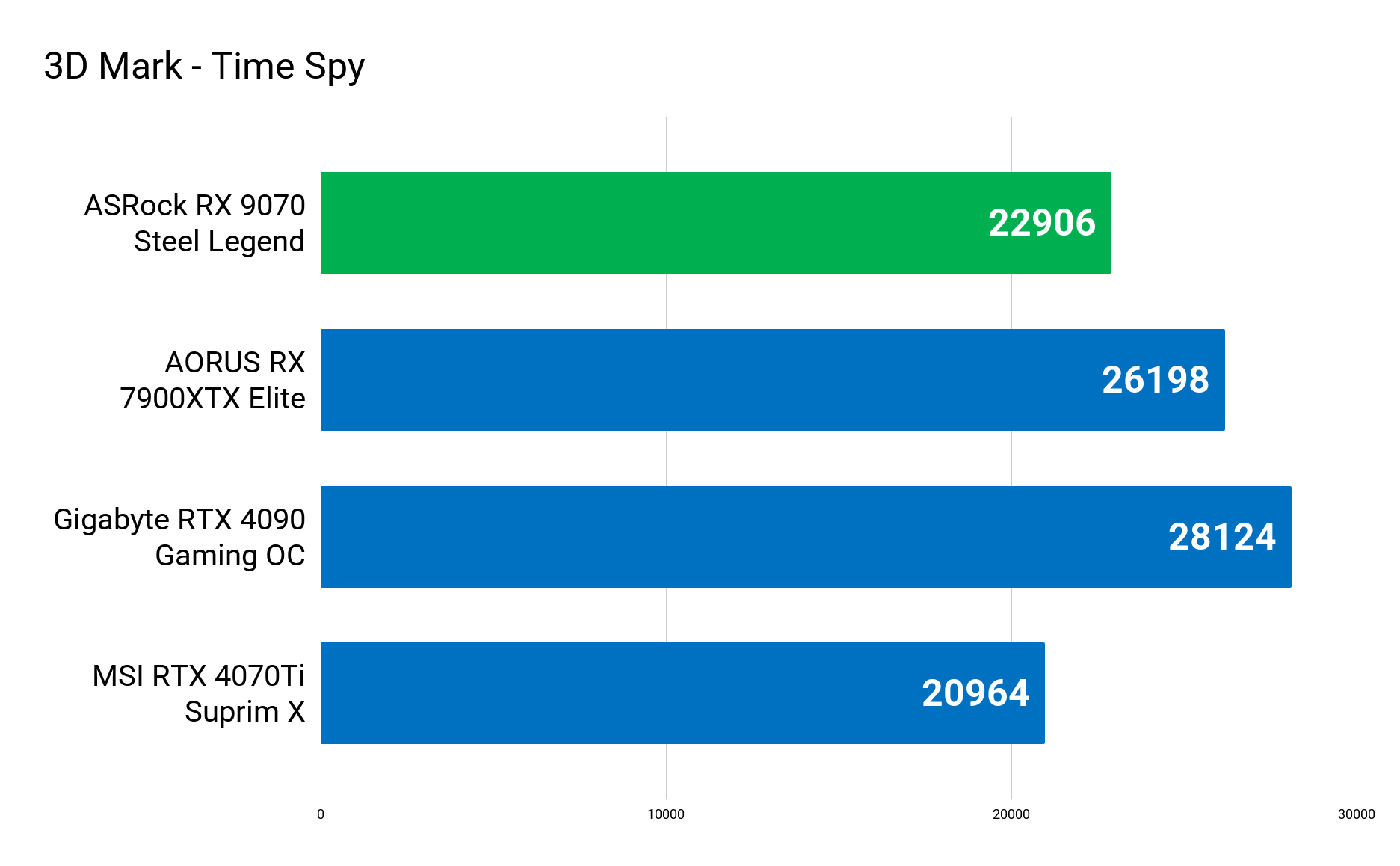
Moving on to Time Spy, we can see that the results are not quite as solid, and now both the RX 7900 XTX and RTX 4090 are pulling ahead. However, the RX 5070 still beats an RTX 4070Ti card quite clearly.
Game tests
Ultimately, though, synthetic benchmarks may not be quite as interesting as real-world gaming benchmarks, which we'll skip to here. All tests here are conducted without the use of DLSS, render scaling, or other similar technologies, so it's a test of pure raw performance.
Cyberpunk 2077
- High Preset - NO DLSS - NO AMD Fidelity FX - Dynamic Resolution Scaling = OFF
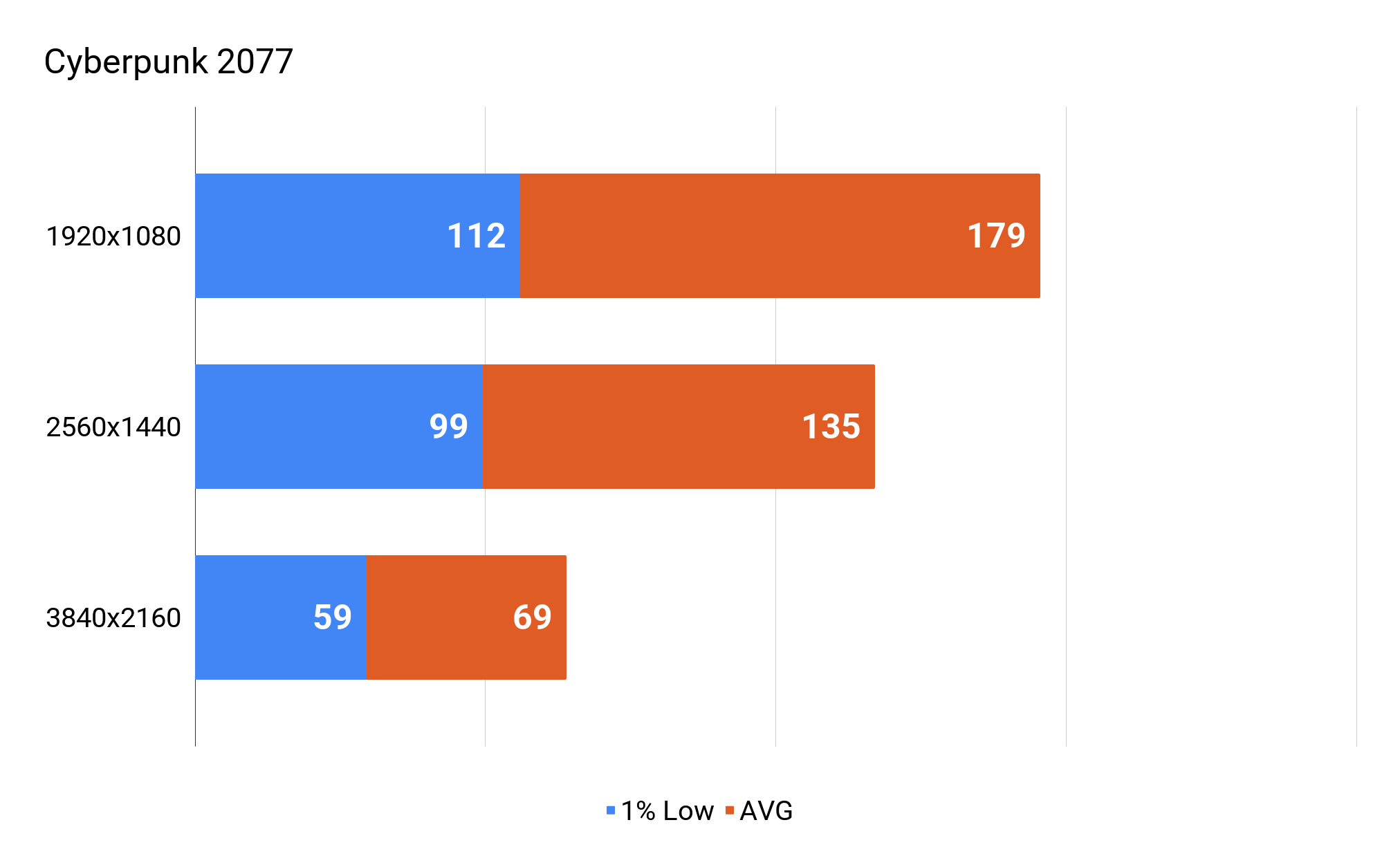
Cyberpunk 2077 is no problem for the RX 9070 card, delivering strong results in all three resolutions. 4K is of course still a heavy task, but results above 60 FPS are still reasonable.
.png)
Looking at the comparison, we can see that the RX 9070 is close to beating the heavyweight cards in the field. The RX 9070 is not far from beating the RTX 4070 TI card in the test.
Assassin's Creed Valhalla
- High Preset - Resolution Scale: 100% - Adaptive Quality = OFF

Assassin's Creed Valhalla is also not a big problem for the RX 9070 card in the test. Here we can also see results of over 100 FPS in all three resolutions.
.png)
In the comparison, the RTX 4090 and RX 7900 XTX pull better results, but again the RX 9070 card beats an RTX 4070 Ti card without much trouble.
Outriders
- Ultra Preset - DLSS: OFF - Resolution Scaling: 100%
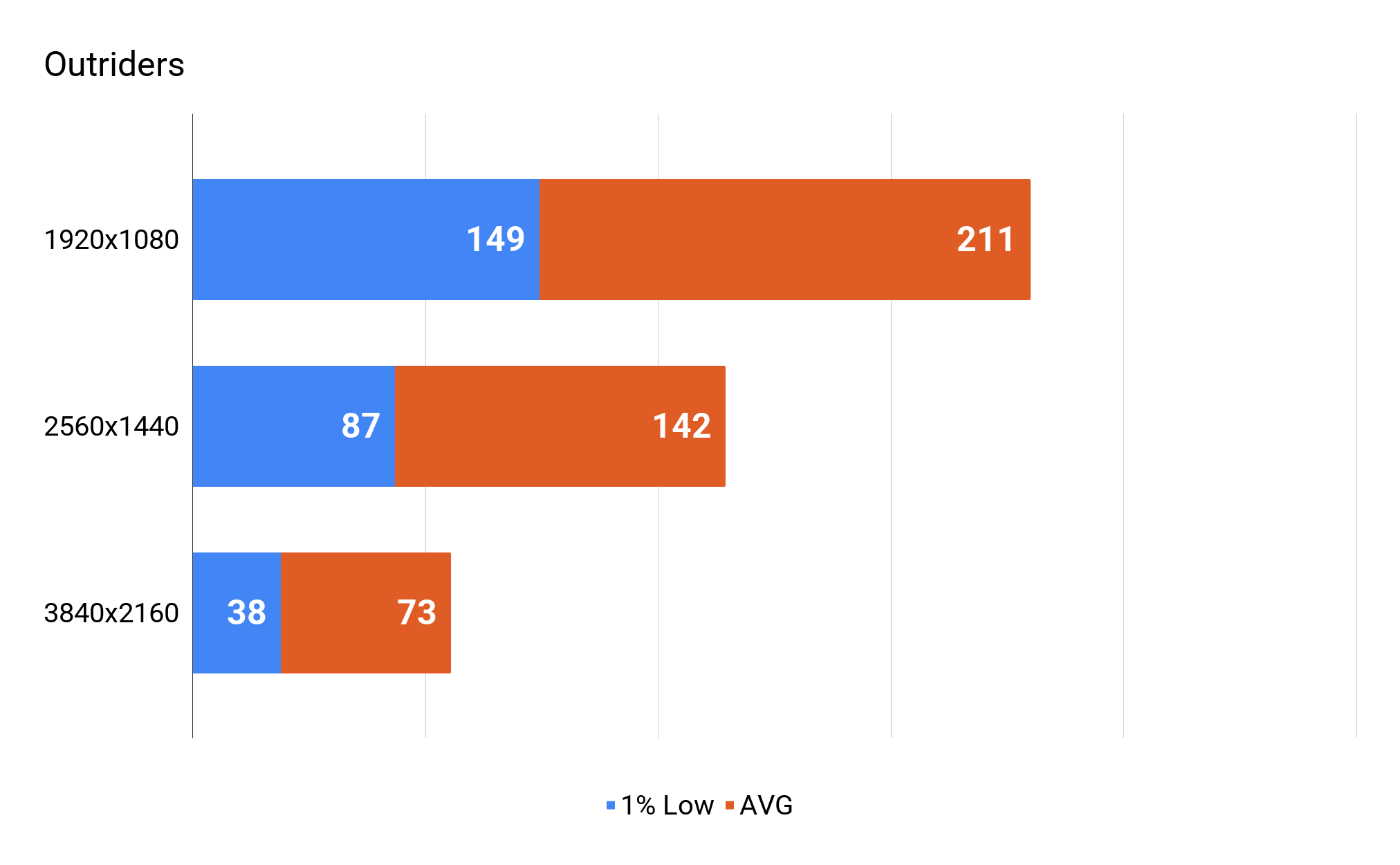
In Outriders we again get good results, but we can't squeeze over 100 FPS in 4K here either.
.png)
The comparison shows a picture that is very similar to the others. However, here we can see that the RTX 4070Ti card, for once, pulls out a win over the RX 9070.
Overwatch 2
- Ultra Preset - Ultra Preset - Render Scale: 100% - Dynamic Render Scale: OFF - High Quality Upsampling: OFF
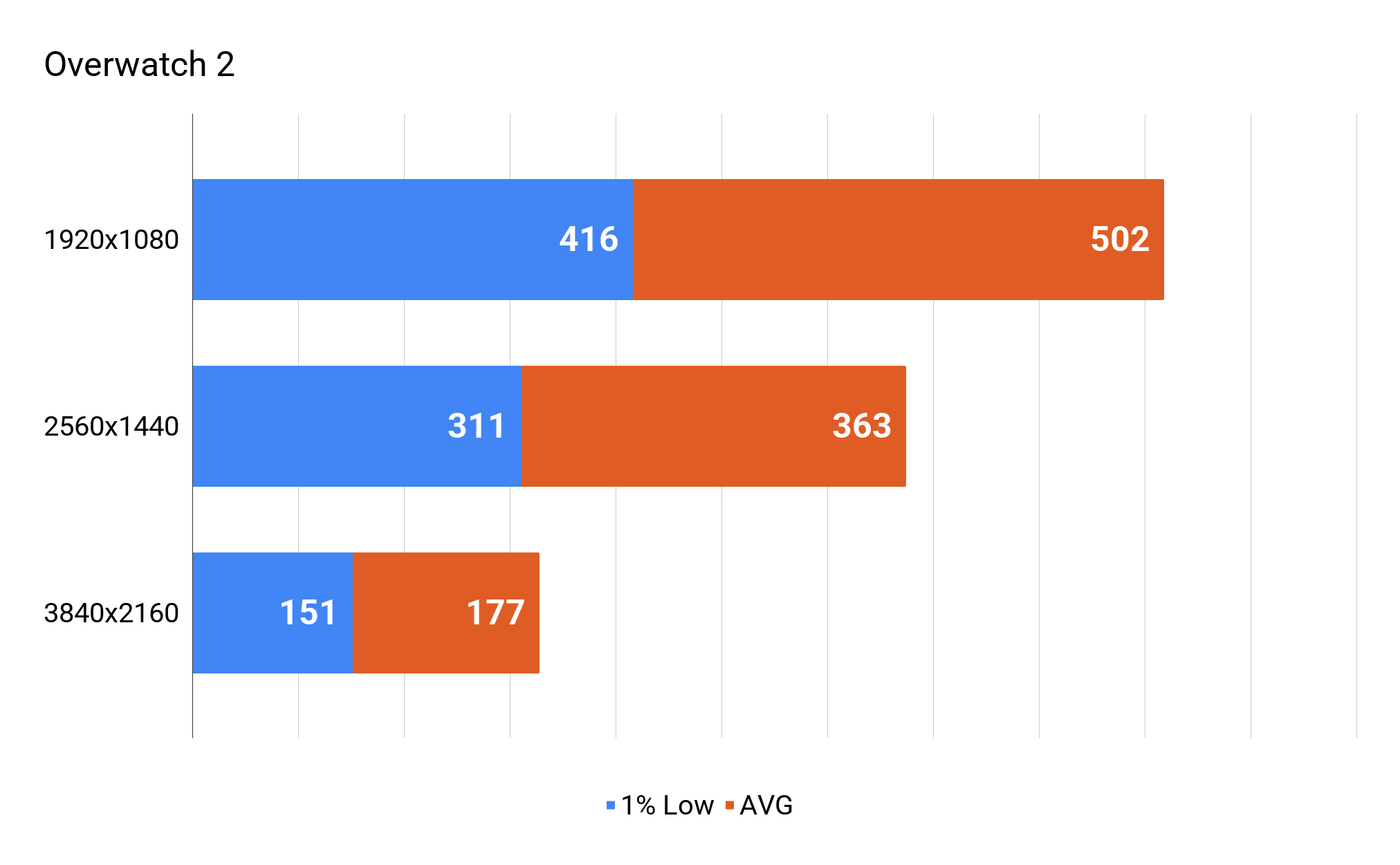
Overwatch 2 is the lightest game in our test, and this is of course also reflected in the results. With results close to 200 FPS in 4K, there is a good opportunity to take advantage of the latest High Refresh 4K gaming monitors on the market.
.png)
In the comparison, we can again see that the RTX 4070Ti card is stronger than the RX 9070 card, but by a fairly small margin.
Ray Tracing
Recently, we have included Ray Tracing in our benchmarks, and I have also run a few benchmarks here, as Ray Tracing is one of the things that AMD highlights as improved with the RDNA 4 platform.

The results show that Ray Tracing is still a pain to play with unless you use upscaling features. However, it is playable at both 1440p and 1080p resolutions.
However, the results are roughly the same as what we saw during our test of the RX 7900 XTX card, so there IS a clear improvement for the new generation.
Price
At the time of writing, I can find the ASRock RX 9700 Steel Legend with an online price of 800$. This means that it is around the same price as I can currently find an RX 7900 XT card for.
If we compare with Nvidia prices, it is currently roughly equivalent to an RTX 4070 Super.
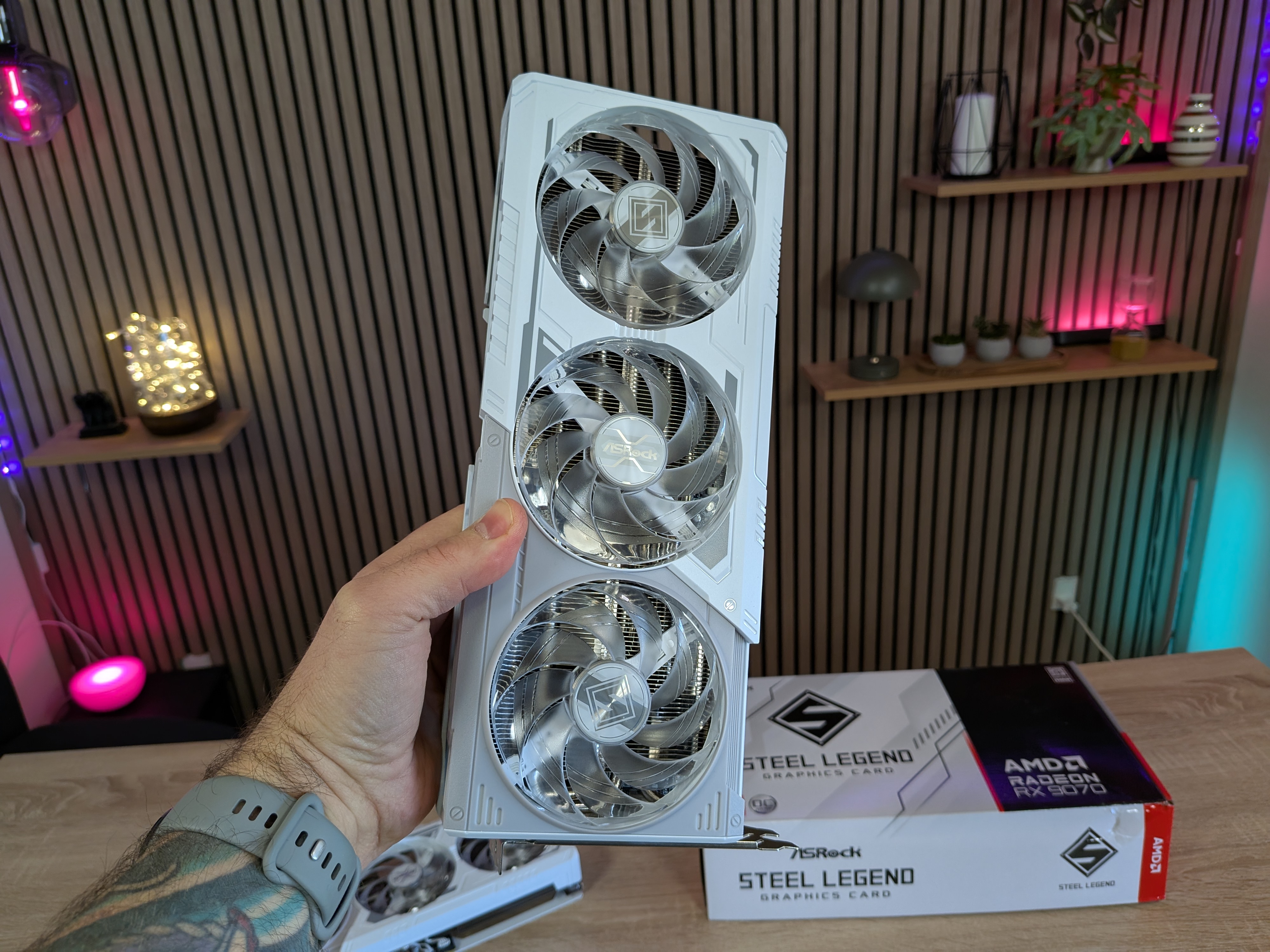
It's worth remembering, however, that AMD announced an expected price of $549 when they launched the card.
Conclusion
AMD and ASRock have made a solid card with the RX 9070. Looking at performance and features, it is a strong card and especially in features like Ray Tracing, there has been a solid leap from the previous generation.
The big problem, however, is the price, as the cards cannot currently be found for anything resembling the price that AMD presented when they presented the new RDNA 4 cards.
If the card were available at the advertised price, it would have been a fantastic card in terms of price to performance ratio. In reality, we are currently landing here in Denmark with a price that is almost twice as high.
At that price, the value of the card looks completely different, as we are in the same price range as, for example, the RTX 4070Ti SUPER card, which, all else being equal, will be a better card for most people, if you can still find them.
We end up with a final score of 7, for a card that on the technical side ends up with really good progress compared to previous generations. The challenge, however, is that the price is currently too high compared to the advertised price. This means that the value is just not really there in a price-to-performance ratio.
If the price finds its way down to around the advertised level, however, it would be a completely different situation and the rating would be better. However, we can only look at things as a snapshot of the market in which we are testing the card.
Advantages
- Good improvements over previous generation
- Good boost clocks
- Reasonable temperature under load
Disadvantages
- The price is currently too high.

Latest graphics card
-
20 Margraphics card
-
13 Jangraphics card
ASRock B580 Steel Legend
-
07 Jangraphics card
ASUS showcases new AMD RX 9700 graphics cards
-
07 Jangraphics card
ASUS ready with large selection of RTX 50 graphics
-
07 Jangraphics card
Nvidia Reflex 2 reduces gaming latency
-
07 Jangraphics card
Nvidia launches DLSS 4 with the new RTX 50 series
-
07 Jangraphics card
Nvidia RTX 50 series is ready
-
07 Jangraphics card
Nvidia launches RTX 5090 at CES
Most read graphics card
Latest graphics card
-
20 Margraphics card
ASRock RX 9070 Steel Legend
-
13 Jangraphics card
ASRock B580 Steel Legend
-
07 Jangraphics card
ASUS showcases new AMD RX 9700 graphics cards
-
07 Jangraphics card
ASUS ready with large selection of RTX 50 graphics
-
07 Jangraphics card
Nvidia Reflex 2 reduces gaming latency
-
07 Jangraphics card
Nvidia launches DLSS 4 with the new RTX 50 series
-
07 Jangraphics card
Nvidia RTX 50 series is ready
-
07 Jangraphics card
Nvidia launches RTX 5090 at CES






